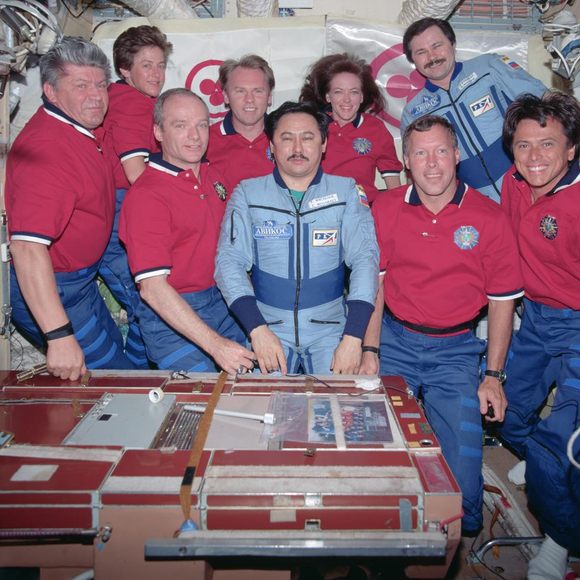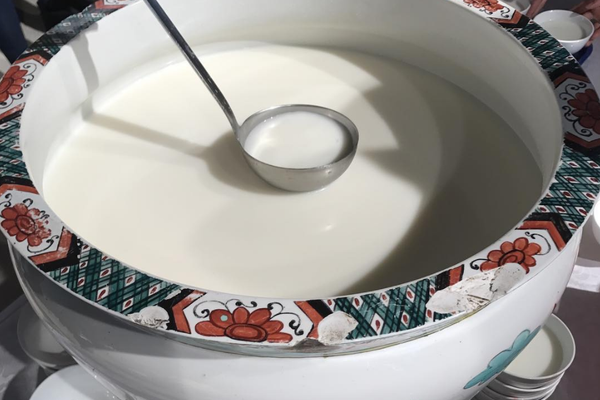When living in an extremely cramped space with two or more people for months, you’d think that there would be no need for a designated communal area. But on Russia’s Mir space station, a high-tech dining table served as a place for the crew to gather for meals and a workstation for various aeronautical projects.
The Mir station orbited Earth from 1986 to 2001, straight through the Soviet Union’s dissolution. The station was the first experiment with long-term space habitation—cosmonaut Valeri Polyakov still holds the record for the longest continuous space sojourn. NASA was also involved with Mir, sending supplies and astronauts to live and conduct experiments aboard.
The multicolored dining table was located in the station’s core module. It came with slots where cosmonauts could heat up tins and tubes of food like liver stroganoff and chicken in white sauce. A built-in vacuum system would suck up any stray crumbs—a vital feature when important equipment could be damaged by stray particles. The table could also dispense hot and cold water for rehydrating food. The reheated and rehydrated food was surprisingly delicious, according to American astronaut Andy Thomas, who especially liked the Russian soups and fruit juices.
The Mir station was in service for 15 years, three times longer than expected, and it had the battle scars to prove it: There were mold breakouts, a fire, and a collision with a cargo spacecraft. After being decommissioned, the body of the space station was mostly broken up on reentry. But the table was brought back to Earth, and eventually to the Memorial Museum of Cosmonautics in Moscow, where it currently resides.
The useful table was important as a surface for food prep and work. But it was also a place where international astronauts could connect and collaborate over breaking bread. Or in this case, rehydrating borscht.
Where to Try It
-
Memorial Museum of Cosmonautics
111 Mira Avenue, Moscow, 129515, RussiaThe home of the Mir space station table, as well as other artifacts of the Soviet space program.
Written By
 Anne Ewbank
Anne Ewbank
Sources
- thetincannoisseur.blogspot.com/2015/10/tins-on-display.html
- www.esa.int/About_Us/Welcome_to_ESA/Mir_FAQs_-_Facts_and_history
- www.sciencephoto.com/media/138053/view
- books.google.com/books?id=Q-45xmPeimcC&pg=PA24&lpg=PA24&dq=cosmonaut+food+mir+station&source=bl&ots=1W8AaKtivk&sig=wExXEDGfnCuPkZACVTACH_FPqyw&hl=en&sa=X&ved=0ahUKEwiZtuyh-LHXAhXF8YMKHZWYAdk4FBDoAQgsMAE#v=onepage&q=cosmonaut%20food%20mir%20station&f=false
- books.google.com/books?id=sBdUh8WqEfYC&pg=PA54&lpg=PA54&dq=mir+food+rehydration&source=bl&ots=T3yCCiDf0X&sig=RAGBEnCorqLgfkmmAAc0eNhvdTM&hl=en&sa=X&ved=0ahUKEwi-wc7I_LHXAhWH2YMKHTnLDRsQ6AEINzAE#v=onepage&q=food&f=false
- spaceflight.nasa.gov/history/shuttle-mir/history/to-h-f-thomas-food.htm
- science.nasa.gov/science-news/science-at-nasa/2007/11may_locad3
- about-kosmos.blogspot.com/2012/02/















